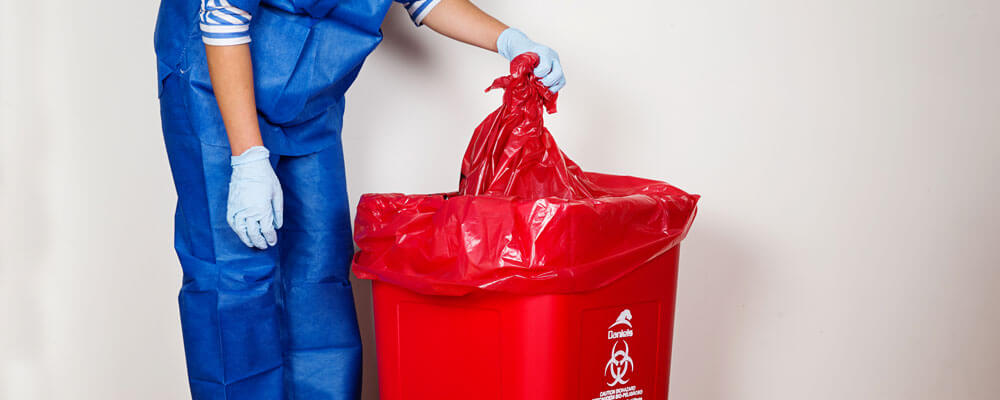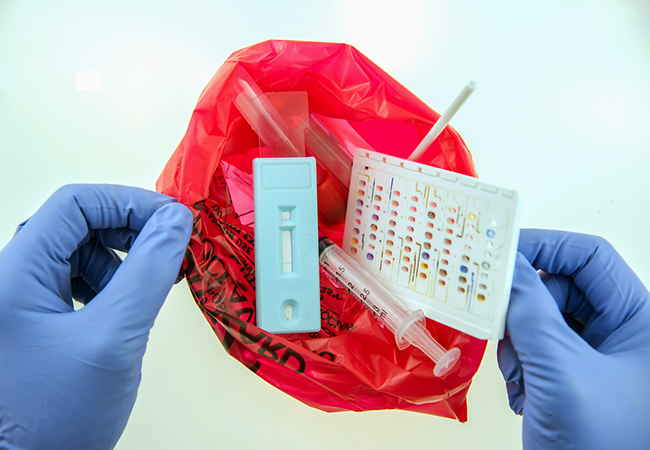Medical Waste Removal Quality: Elevating Security Specifications in Your Center
Wiki Article
Stay Ahead of Laws: Expert Advice on Medical Garbage Disposal
In a globe where the healthcare industry is regularly advancing, it is necessary for clinical facilities to stay ahead of guidelines when it concerns the appropriate disposal of clinical waste. With rigorous standards and constant regulatory modifications, it can be testing to browse the intricacies of this procedure. Nonetheless, with professional recommendations, centers can ensure compliance and mitigate dangers connected with improper waste disposal. From comprehending the various categories of clinical waste to applying the appropriate collection and partition techniques, this conversation will certainly supply workable pointers and important insights to assist centers stay in advance of policies in the ever-changing landscape of clinical waste disposal.Recognizing Clinical Waste Categories
Recognizing medical waste categories is necessary for proper disposal and administration in medical care centers. Medical waste refers to any kind of waste produced by medical care tasks that may posture a risk to public health or the atmosphere. It is essential to classify medical waste accurately to ensure its safe handling, therapy, disposal, and transport.There are a number of categories of clinical waste that healthcare centers need to be aware of. One of the most usual groups consist of contagious waste, pathological waste, sharps waste, pharmaceutical waste, and chemical waste. Each category has details standards and laws for its correct administration and disposal.
Infectious waste includes materials contaminated with blood or other physical fluids, such as handwear covers, gowns, and laboratory societies. Pathological waste describes human cells, organs, or body components that call for special delivery and disposal. Sharps waste consists of made use of needles, syringes, and other sharp things that can cause injury and transmit infections. Pharmaceutical waste consists of ended, unused, or infected medicines that require cautious handling and disposal. Last but not least, chemical waste includes solvents, disinfectants, and various other chemical compounds used in healthcare centers.
Remaining Up-To-Date With Regulatory Changes
Remaining current with governing changes is important for healthcare facilities to guarantee conformity and appropriate administration of clinical waste disposal. medical waste removal services. With guidelines constantly evolving, it is important for health care centers to stay up-to-date to stay clear of penalties, fines, and prospective injury to the environment and public wellnessTo remain ahead of regulative adjustments, medical care centers must establish a system for tracking and monitoring updates. This can be done by signing up for regulatory e-newsletters, participating in seminars and workshops, and proactively participating in sector associations. Furthermore, facilities must mark a personnel or group accountable for remaining informed and distributing info to appropriate stakeholders.
Regular communication with regulative agencies is also crucial. Healthcare facilities must establish relationships with regional, state, and government firms to ensure they are mindful of any kind of adjustments in laws that may influence their waste monitoring techniques. This can be done with routine meetings, participation in public comment periods, and positive engagement with regulatory companies.
Moreover, healthcare facilities need to take into consideration partnering with waste management companies that concentrate on medical garbage disposal (medical waste disposal services with WasteX). These firms are frequently well-versed in the most up to date laws and can supply support and support to make certain compliance
Executing Appropriate Collection and Segregation Methods
To properly manage medical garbage disposal, medical care facilities have to develop appropriate collection and partition techniques according to governing standards. Executing these techniques guarantees the safe handling and disposal of potentially hazardous materials, safeguards the environment, and reduces the threat of injuries and infections to medical care workers and the basic public.
Proper collection and partition methods include using assigned containers and labeling systems. Medical care centers must provide clearly labeled containers for various types of clinical waste, such as sharps, contagious waste, pharmaceutical waste, and non-hazardous waste. These containers must be color-coded and clearly marked to prevent confusion and promote simple recognition.
In addition, medical care centers ought to educate their personnel on the appropriate treatments for gathering and setting apart clinical waste. This includes enlightening them on the different kinds of waste, the proper containers to make use of, and the importance of adhering to guidelines and policies. Routine training sessions and refresher course programs must be performed to guarantee that personnel remain up-to-date on best practices.
Moreover, health care centers need to develop a system for routine collection and disposal of clinical waste. This might include partnering with accredited waste monitoring companies that specialize in medical garbage disposal. These firms will certainly make certain that the gathered waste is carried and dealt with in compliance with regulatory needs.
Selecting the Right Disposal Methods

Incineration is one of one of the most reliable and typical methods for getting rid of particular sorts of medical waste, such as pathological waste and sharps. It includes the controlled burning of waste at high temperatures, decreasing it to ash. Nonetheless, incineration can release harmful toxins into the air and add to air contamination.

Other disposal approaches include chemical therapy, microwave therapy, and landfilling. Chemical therapy includes making use of chemicals to disinfect and neutralize the waste. Microwave treatment makes use of microwave energy to heat and disinfect the waste. Landfilling includes hiding the waste in an assigned land fill area (medical waste disposal services with WasteX). Landfilling must be the last hotel due to the potential threat of contamination to dirt and groundwater.
Making Sure Conformity With Paperwork and Training
After meticulously taking into consideration helpful site the proper disposal techniques for medical waste, medical care facilities have to make sure conformity with guidelines and decrease environmental impact by implementing efficient paperwork and training treatments. This action is vital in maintaining a sustainable and risk-free setting for both health care workers and the public.
Training is just as important in ensuring compliance with guidelines. Healthcare employees who take care of medical waste should obtain ideal training on waste partition, taking care of, and disposal procedures. This training needs to cover subjects such as the appropriate usage of individual safety tools, identification of various kinds of waste, and the right disposal approaches for each waste classification. By offering comprehensive training, health care facilities can empower their staff to make enlightened decisions and minimize the threat of incorrect waste disposal.
Verdict
In conclusion, remaining ahead of policies in medical garbage disposal is important for healthcare facilities. medical waste removal services. Understanding the different categories of medical waste, staying upgraded with regulatory adjustments, carrying out proper collection and segregation methods, choosing the suitable disposal methods, and making certain compliance via documents and training are all necessary actions. By adhering to these guidelines, medical care organizations can efficiently take care of and dispose of clinical waste in a safe and accountable fashionFrom understanding the different classifications of clinical waste to executing the ideal collection and partition approaches, this conversation will provide important insights and actionable ideas to help centers remain in advance of guidelines in the ever-changing landscape of clinical waste disposal. - medical waste disposal services with WasteX
The most typical groups include contagious waste, pathological waste, sharps waste, pharmaceutical waste, and chemical waste. Healthcare Discover More Here centers must offer clearly classified containers for different types of clinical waste, such as sharps, infectious waste, pharmaceutical waste, and non-hazardous waste. Health care facilities need to establish an extensive system to record and track all elements of clinical waste disposal, including kinds of waste generated, amounts, and disposal approaches used. Healthcare employees who manage clinical waste must receive ideal training on waste segregation, taking care of, and disposal treatments.
Report this wiki page